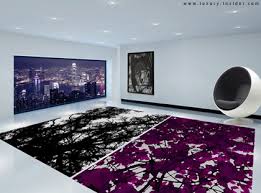"Wool was probably the first animal fiber to be made into cloth. The art of spinning wool,yarn developed about 4000 B.C. and encouraged trade among the nations in the region of the Mediterranean Sea".
The first wool factory in England was established by the Romans in 50 A.D in the Winchester area. It is said that the 1797 the British took 13 of their Merino sheep and started Australia's Merino sheep' wool industry.
"There are 40 different breeds of sheep in the world producing a rough estimate of 200 types of wool with varying standards. The major wool producers in the world are Australia, Argentina, China and South Africa". Ref: As above
The four major steps of wool production:
- Shearing - the process used to remove the sheep's fleece.
- Grading - The sorting of each piece by length, colour (shade), waviness, fineness etc plus the removal of any stains and damaged pieces.
- Making Yarn - Before this happens the wool is cleaned with detergents to remove yolk and other things that may be trapped in it such as dust and sand. Then the wool goes through a process called carding which passes the wool through rollers that have wire teeth. These rollers untangle the fibres and flatten them into a sheet called a web which are then formed into narrow ropes known as 'Silvers'. "Carding length fibres are used to make woollen yarn. Combing length fibres and French combing length fibres are made into worsted yarn". Ref:http://library.thinkquest.org/
- Making the actual Fabric - Wool manufacturers knit or weave the yarns into a multiple of fabrics.
"The finishing of fabrics made of woolen yarn begins withfulling. This process involves wetting the fabric thoroughly with water and then passing it through the rollers. Fulling makes the fibers interlock and mat together. It shrinks the material and giving it additional strength and thickness. Worsteds go through a process called crabbing in which the fabric passes through boiling water and then cold water. This procedure strengthens the fabric".
1)It is hard wearing and absorbs moisture.
2)It does not burn over a flame but smoulders instead.
3)It is lightweight and versatile.
4)Wool does not wrinkle easily.
5)It is resistant to dirt and wear and tear.
2)It does not burn over a flame but smoulders instead.
3)It is lightweight and versatile.
4)Wool does not wrinkle easily.
5)It is resistant to dirt and wear and tear.
Wool is used to make sweaters, dresses, coats, suits, jackets, pants and the lining of boots.It can also be made into blankets and carpets.
Ref: library.thinkquest.org
Ref: history.org
I chose this image not only as it shows the Shearing process, but I liked the way the sheep looks relaxed as well as the person doing the job. This indicates to me that the sheep here are well reared.
A picture of the shears use to remove wool.
I feel that this picture shows the shearing process as a bond between the sheep a its carer. i also find this picture very fashion inspiring.
I Like the curliness of this wool in its natural form and feel that it could be used throughout the A/W 2011-12 of
trend almost as an embellishment or accessory instead of the usual full garment pieces.
trend almost as an embellishment or accessory instead of the usual full garment pieces.
An old fashioned spinning wheel used in the process of making yarn. Ref: high-orbit.co.uk
Ref: high-orbit.co.uk
This is a picture of an earlier industrial yarn making machine. I thought it would be good to look the wool industry
in the early days to see how we have advanced over the years. Obviously industrial machinery was introduced
as it is quicker than manual labour hence making it better for business and economy.
as it is quicker than manual labour hence making it better for business and economy.
Modern day yarn spinning machines.
The earlier techniques look more interesting to me. Everything is getting quite robotic to me.
Hence wanting to keep my trend predictions quite natural but edgy.
Hence wanting to keep my trend predictions quite natural but edgy.
research, the idea of taking control of nature.
Not only has this person done that but they have
also managed to make their creation fit in with nature
which is beautiful. I predict this is that this trend is going to
be big this A/W 2011-12.
also managed to make their creation fit in with nature
which is beautiful. I predict this is that this trend is going to
be big this A/W 2011-12.
Ref: managed-hostings.com
I decided to research wool as it is a natural fibre from nature itself, which is what my
trend prediction is for a/w 2011-12 is, and feel that this information will help me when
putting together my trend book.
These rugs are made from 100% New Zealand wool. I like the design of them as they portray nature.
 Ref: luxury-insider.com
Ref: luxury-insider.com
trend prediction is for a/w 2011-12 is, and feel that this information will help me when
putting together my trend book.
These rugs are made from 100% New Zealand wool. I like the design of them as they portray nature.
No comments:
Post a Comment